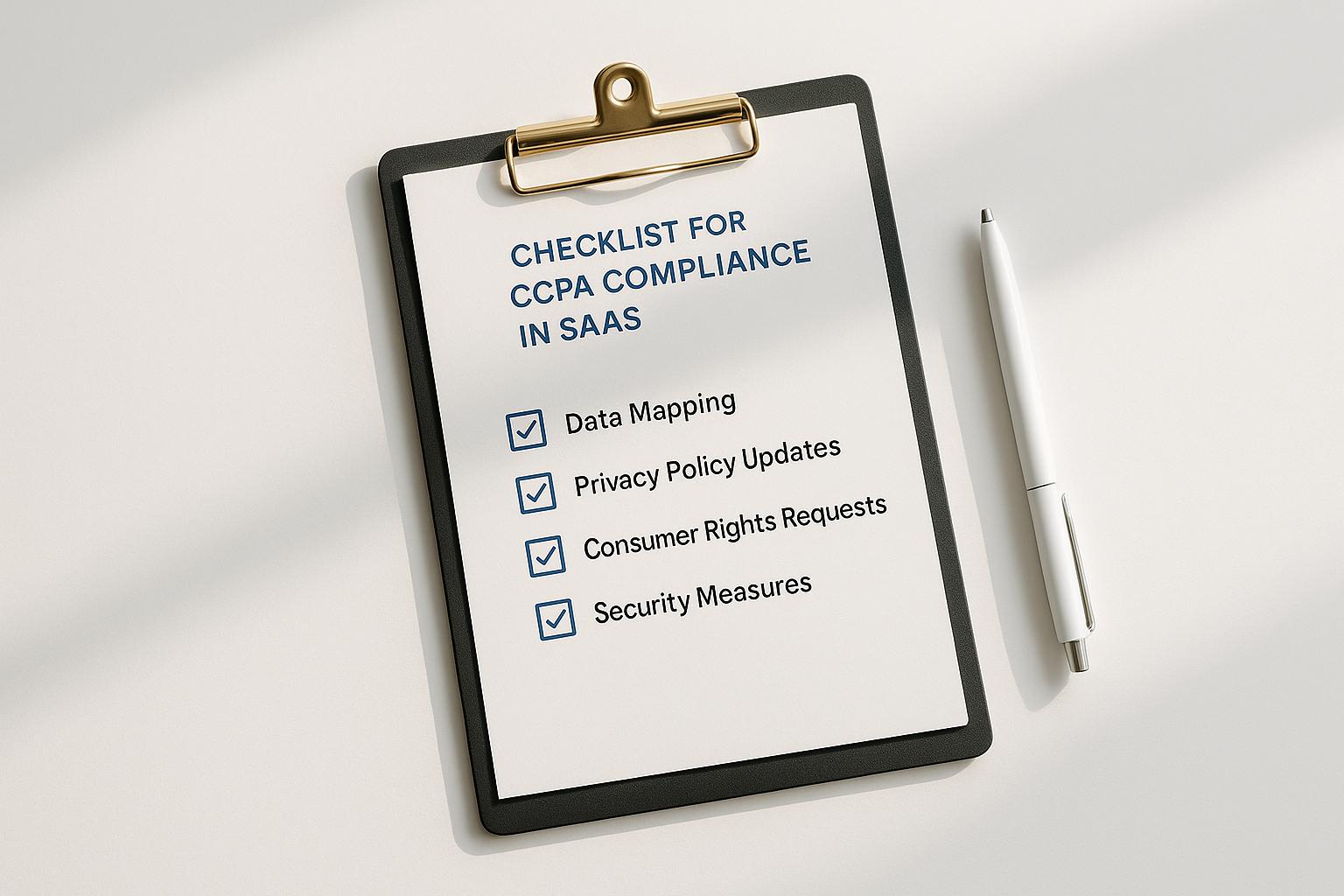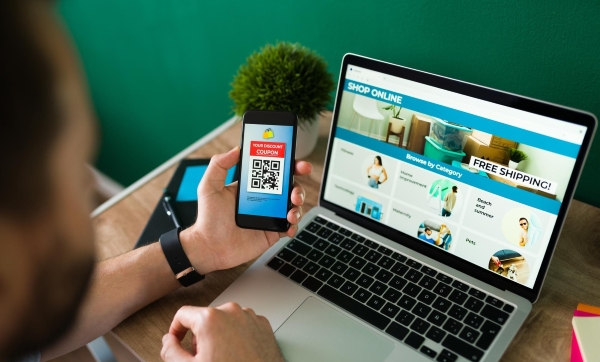Secure app authentication is crucial to protect user data and prevent security breaches. Here are the key best practices:
- Enforce Strong Password Policies
- Require passwords with minimum 12 characters
- Include uppercase, lowercase, numbers, and special characters
- Expire passwords every 60-90 days
- Store password history to prevent reuse
- Implement Multi-Factor Authentication (MFA)
- Use additional factors like mobile app codes or biometrics
- Provides increased security against phishing and credential theft
- Hash and Salt Passwords
- Use modern hashing algorithms like bcrypt or Argon2
- Generate unique salts for each user
- Hash passwords with at least 10,000 iterations
- Re-hash database periodically with new salts
- Use Secure Communication Protocols
- Exclusively use HTTPS for all communication
- Verify certificates correctly to prevent MITM attacks
- Avoid mixing HTTP and HTTPS protocols
- Limit Login Attempts
- Set a reasonable threshold (e.g., 3-5 attempts)
- Block IP addresses or lock accounts after threshold
- Use time-based lockouts (e.g., 30 minutes)
- Deploy a Web Application Firewall (WAF)
- Filters and blocks malicious traffic
- Protects against common web attacks like SQL injection
- Regularly update WAF rules
- Regularly Update and Patch Dependencies
- Check for updates and security patches
- Test updates thoroughly before deployment
- Pin dependencies to specific versions
- Implement Secure Session Management
- Use long, complex, and unpredictable session identifiers
- Store session identifiers on the server-side
- Regenerate session IDs after login or sensitive actions
- Adopt a Secure Authentication Framework
- Provides centralized management of authentication policies
- Supports multiple authentication methods and platforms
- Offers a universal library of security policies
- Continuously Monitor and Test Authentication Systems
- Use password cracking and credential stuffing tools
- Test for phishing and session hijacking vulnerabilities
- Identify and address holes in the authentication process
By following these best practices, you can significantly enhance the security of your app's authentication system and protect your users' sensitive data.
1. Enforce Strong Password Policies
To prevent brute force attacks and password guessing attacks, it's crucial to enforce strong password policies in your mobile and web applications. This involves implementing rules to ensure passwords are strong and secure.
Classify Your Data
Classify your data into three categories:
CategoryDescriptionPublicData accessible by anyone, such as marketing materials and public announcements.InternalData accessible only by authorized personnel, such as employee information and internal documents.ConfidentialData requiring the highest level of security, such as customer usernames and passwords.
Implement Password Rules
Enforce the following password rules:
- Password length: Require passwords to be at least 12 characters long.
- Password complexity: Require passwords to contain a mix of:
- Uppercase letters
- Lowercase letters
- Numbers
- Special characters
- Password expiration: Require users to change their passwords every 60-90 days.
- Password history: Store a history of previous passwords to prevent users from reusing old passwords.
By enforcing these rules, you can significantly reduce the risk of password-related attacks and protect your users' sensitive information.
2. Implement Multi-Factor Authentication (MFA)
Implementing Multi-Factor Authentication (MFA) is a crucial step in securing your mobile and web applications. MFA adds an extra layer of security to the authentication process, making it more difficult for attackers to gain unauthorized access.
Why MFA is Important
MFA provides several benefits:
- Increased Security: Even if one factor is compromised, the attacker would still need the other factor to gain access.
- Protection Against Phishing: MFA codes are often time-sensitive and not reusable, making them less susceptible to phishing attacks.
- Compliance: Many industry regulations require MFA to protect sensitive data.
Types of MFA Factors
MFA factors can be categorized into three types:
Factor TypeDescriptionKnowledgeSomething the user knows, such as a password, PIN, or answer to a security question.PossessionSomething the user has, such as a smartphone, token, or smart card.InherenceSomething the user is, such as a biometric characteristic like a fingerprint or facial recognition.
By implementing MFA, you can significantly reduce the risk of password-related attacks and protect your users' sensitive information.
3. Hash and Salt Passwords
Hashing and salting passwords are crucial techniques for protecting user data and preventing unauthorized access to web applications. What is password hashing? Password hashing transforms a password into a fixed-length string of characters using a mathematical algorithm, making it infeasible to convert the hash back to the original password.
Why Hashing and Salting are Important
Hashing and salting passwords provide robust security by ensuring stored passwords remain indecipherable if the database is breached. This layered approach is an industry-standard practice employed by reputable websites and applications that handle sensitive user credentials.
Best Practices for Salted Password Hashing
To maximize login security for users, follow these guidelines:
Best PracticeDescriptionUse a modern hashing algorithmChoose a slow hashing algorithm like bcrypt, PBKDF2, or Argon2Generate a unique saltCreate a long, cryptographically-secure random salt for each userHash passwords with sufficient iterationsHash passwords with at least 10,000 iterations, ideally 100,000+Re-hash database periodicallyRe-hash database periodically with new salts and iterationsEnsure salts and hashes aren’t loggedAvoid logging salts and hashes to prevent accidental exposureEnforce strong password complexity rulesImplement strong password complexity rules to prevent weak passwordsOffer two-factor authenticationProvide an additional security layer with two-factor authentication
By implementing these best practices, you can significantly reduce the risk of password-related attacks and protect your users' sensitive information.
4. Use Secure Communication Protocols
When it comes to secure app authentication, using secure communication protocols is crucial. This ensures that data exchanged between the client and server remains encrypted and protected from unauthorized access.
The Risks of Insecure Communication
Imagine a scenario where your app uses HTTP for some parts and HTTPS for others. This mixed approach can lead to vulnerabilities, making it possible for attackers to intercept sensitive data.
Best Practices for Secure Communication
To avoid these risks, follow these guidelines:
Best PracticeDescriptionUse HTTPS exclusivelyEnsure all communication between the client and server uses HTTPSVerify certificates correctlyImplement proper certificate verification to prevent man-in-the-middle (MITM) attacksUse packet inspection toolsUtilize tools like Wireshark to inspect packets and detect any insecure communicationAvoid mixed protocol usageRefrain from using both HTTP and HTTPS in your app
By following these best practices, you can significantly reduce the risk of data breaches and ensure secure communication between your app and server.
Remember, secure communication protocols are a critical component of secure app authentication. By following these guidelines, you can protect your users' sensitive information and maintain the trust they have in your app.
5. Limit Login Attempts
Limiting login attempts is a crucial step in preventing brute-force attacks and protecting your app's authentication system. By restricting the number of login attempts from a single IP address, you can significantly reduce the risk of unauthorized access.
Understanding the Risks of Unlimited Login Attempts
When you allow unlimited login attempts, you're giving attackers a chance to try as many password combinations as they want. This can lead to a brute-force attack, where an attacker uses automated tools to rapidly try different passwords until they gain access to your app.
Best Practices for Limiting Login Attempts
To limit login attempts effectively, follow these guidelines:
Best PracticeDescriptionSet a reasonable thresholdDetermine a reasonable number of login attempts (e.g., 3-5) before locking out the IP address or account.Implement IP blockingBlock the IP address from which the login attempts are coming to prevent further attacks.Use a time-based lockoutLock out the IP address or account for a specified period (e.g., 30 minutes) after reaching the threshold.Monitor login attemptsRegularly monitor login attempts to detect and respond to potential brute-force attacks.
By limiting login attempts, you can significantly reduce the risk of brute-force attacks and protect your app's authentication system. Remember to strike a balance between security and usability to avoid frustrating legitimate users.
6. Deploy a Web Application Firewall (WAF)
A Web Application Firewall (WAF) is a crucial security measure to protect your app's authentication system. It acts as a shield between your application and the internet, filtering and monitoring incoming traffic to prevent malicious attacks.
What is a WAF?
A WAF is a firewall that monitors, filters, and blocks HTTP traffic to and from a web application. It helps protect your app from common web attacks.
Why Use a WAF?
A WAF provides an additional layer of security to your app's authentication system by:
BenefitDescriptionFiltering out malicious trafficBlocks suspicious traffic to prevent attacksProtecting against common web attacksDefends against SQL injection, XSS, and CSRF attacksReducing the risk of data breachesMinimizes the risk of sensitive data exposureHelping to meet compliance requirementsAssists in meeting regulatory requirements for security
Best Practices for Deploying a WAF
To get the most out of your WAF, follow these best practices:
Best PracticeDescriptionChoose a reputable WAF providerSelect a provider that offers robust security features and reliable supportConfigure the WAF correctlyEnsure the WAF is configured to filter traffic correctly and minimize false positivesRegularly update the WAF rulesKeep the WAF rules up-to-date to protect against new and emerging threatsMonitor WAF logsRegularly monitor WAF logs to detect and respond to potential security incidents
By deploying a WAF and following these best practices, you can significantly improve the security of your app's authentication system and protect against common web attacks.
sbb-itb-8abf120
7. Regularly Update and Patch Dependencies
Regularly updating and patching dependencies is crucial for secure app authentication. Outdated dependencies can lead to security vulnerabilities, compatibility issues, and performance optimization problems.
Why Update Dependencies?
Outdated dependencies often contain known security vulnerabilities that can be exploited by hackers. By maintaining up-to-date dependencies, you can prevent these newly disclosed vulnerabilities and ensure the security of your application.
Best Practices for Updating Dependencies
To ensure the security and stability of your application, follow these best practices:
Best PracticeDescriptionRegularly check for updatesUse tools like npm or yarn to regularly check for updates to your dependencies.Update dependencies explicitlyAvoid automatic updates, and instead, update dependencies explicitly to ensure you've tested the new version.Pin dependencies to specific versionsPin dependencies to specific versions to avoid unexpected changes and ensure reproducibility.Test updates thoroughlyThoroughly test updates to ensure they don't break your application or introduce new vulnerabilities.
By following these best practices, you can ensure that your dependencies are up-to-date, secure, and compatible with your application. Remember, regular updates and patches are essential for maintaining the security and stability of your app's authentication system.
8. Implement Secure Session Management
Secure session management is crucial to prevent unauthorized access to user sessions and sensitive data. Here are some best practices to ensure secure session management:
Use Secure Session Identifiers
Use long, complex, and unpredictable session identifiers to prevent attackers from guessing or brute-forcing them.
Implement Server-Side Session Management
Store session identifiers on the server-side to prevent client-side tampering.
Properly Validate Logouts
When a user logs out, ensure that the session is properly invalidated across all instances the user visited.
Regenerate Session IDs
Regenerate session IDs after login or sensitive actions to prevent session hijacking and fixation attacks.
Set Session Expiration Times
Set session expiration times to automatically log out users after a specified period of inactivity.
Here is a summary of the best practices for secure session management:
Best PracticeDescriptionUse Secure Session IdentifiersUse long, complex, and unpredictable session identifiersImplement Server-Side Session ManagementStore session identifiers on the server-sideProperly Validate LogoutsInvalidate sessions across all instances after logoutRegenerate Session IDsRegenerate session IDs after login or sensitive actionsSet Session Expiration TimesAutomatically log out users after a specified period of inactivity
By following these best practices, you can ensure that your application's session management is secure and protects user data from unauthorized access.
9. Adopt a Secure Authentication Framework
Implementing a secure authentication framework is crucial for robust application security practices. A framework provides a structured approach to managing authentication, increasing security and driving down costs.
Why a Framework?
Traditional password-based authentication has limitations. A framework addresses these limitations by providing a centralized approach to managing authentication.
Key Features of a Secure Authentication Framework
A secure authentication framework should provide the following key features:
FeatureDescriptionCentralized managementA single set of policies to manage authentication across the organizationFlexibilitySupport for multiple authentication methods and platformsSecurityA universal library of policies to increase securityCost-effectivenessConsolidation of authentication mechanisms to reduce costs
By adopting a secure authentication framework, organizations can strengthen their application security practices and protect sensitive information from unauthorized access.
10. Continuously Monitor and Test Authentication Systems
Continuously monitoring and testing authentication systems is crucial to ensure the security and integrity of your application. This involves identifying vulnerabilities, enhancing security measures, preventing unauthorized access, mitigating risks, and maintaining user trust.
Why Monitor and Test?
Monitoring and testing authentication systems help identify holes in the authentication process, which can be closed immediately. This is essential to prevent data theft, fraud, or sabotage.
How to Monitor and Test?
To monitor and test authentication systems, you can use various tools and techniques, such as:
Tool/TechniqueDescriptionPassword cracking toolsTest the strength and security of passwords and password policiesCredential stuffing toolsTest a system's vulnerability to credential stuffing attacksPhishing toolsTest user awareness and security controls against phishing attacksSession hijacking toolsTest session management security and integrity
By continuously monitoring and testing authentication systems, you can ensure the security and integrity of your application and protect sensitive information from unauthorized access.
Conclusion
Secure app authentication is an essential aspect of protecting user data and preventing security threats. By following the 10 best practices outlined in this article, you can significantly reduce the risk of unauthorized access and data breaches.
Key Takeaways
To ensure the security and integrity of your application, remember to:
- Implement strong password policies and multi-factor authentication
- Hash and salt passwords to protect user credentials
- Use secure communication protocols and limit login attempts
- Deploy a web application firewall and regularly update dependencies
- Implement secure session management and adopt a secure authentication framework
- Continuously monitor and test authentication systems
By prioritizing security and staying vigilant, you can protect your users and your application from potential security threats.
Final Thoughts
In today's digital landscape, protecting user credentials and access is crucial for maintaining trust and preventing financial losses. By following these best practices, you can stay ahead of potential security threats and provide a safe and secure experience for your users.
Remember, security is an ongoing process that requires constant attention and improvement. By prioritizing security and staying vigilant, you can ensure the integrity of your application and protect your users from potential security threats.
FAQs
What are some best practices for securely storing and managing user credentials in software applications?
To securely store and manage user credentials, follow these best practices:
Best PracticeDescriptionHash passwordsStore passwords using a hashing algorithm to protect them from unauthorized access.Use HTTPSTransmit user credentials using HTTPS to encrypt the data in transit.Strong password policyImplement a strong password policy, including requirements for password length, complexity, and expiration.Two-factor authenticationConsider using two-factor authentication to add an extra layer of security.Limit login attemptsLimit the number of login attempts to prevent brute-force attacks.Restricted accessLimit access to user credentials to only those who need it.
What are authentication vulnerabilities?
Authentication vulnerabilities refer to weaknesses in the processes and mechanisms used to verify the identity of users or systems. These vulnerabilities can be exploited by attackers to gain unauthorized access to systems, steal sensitive data, or disrupt operations.
Examples of authentication vulnerabilities include:
- Weak or default passwords
- Insufficient password policies
- Insecure session management
It's essential to identify and address these vulnerabilities to ensure the security and integrity of your application.









